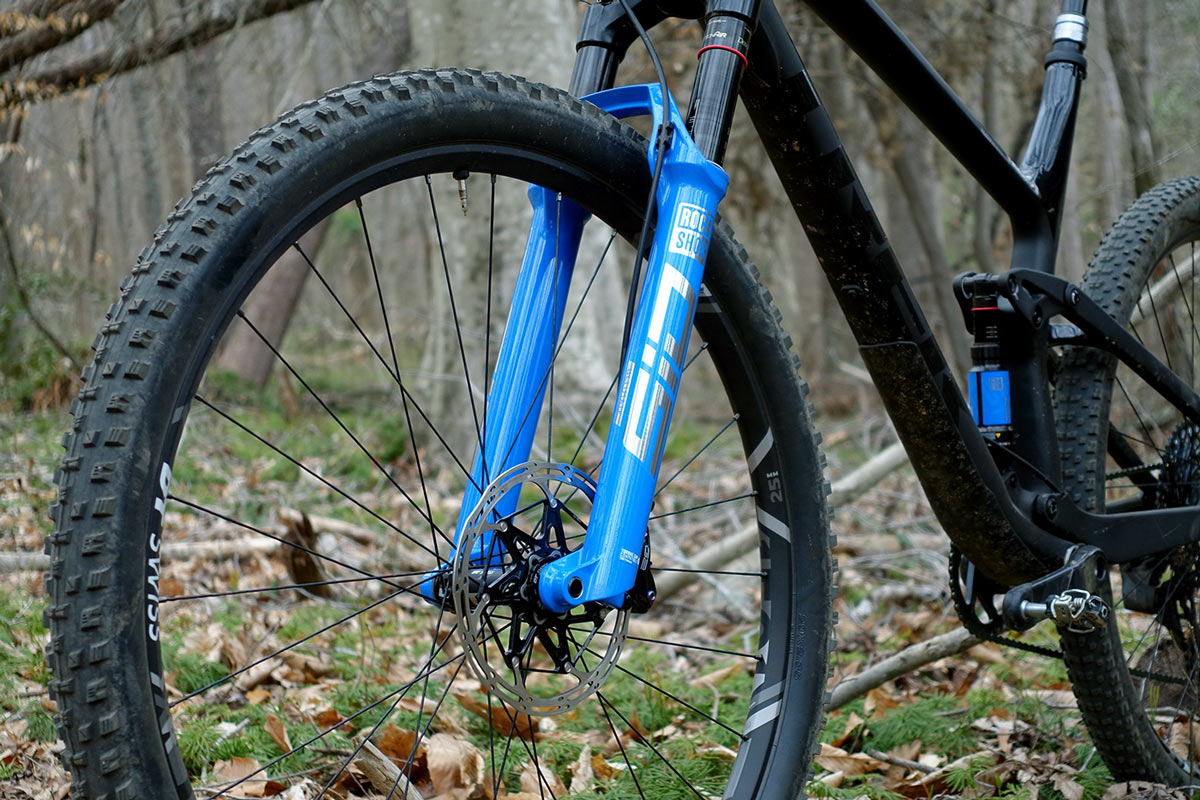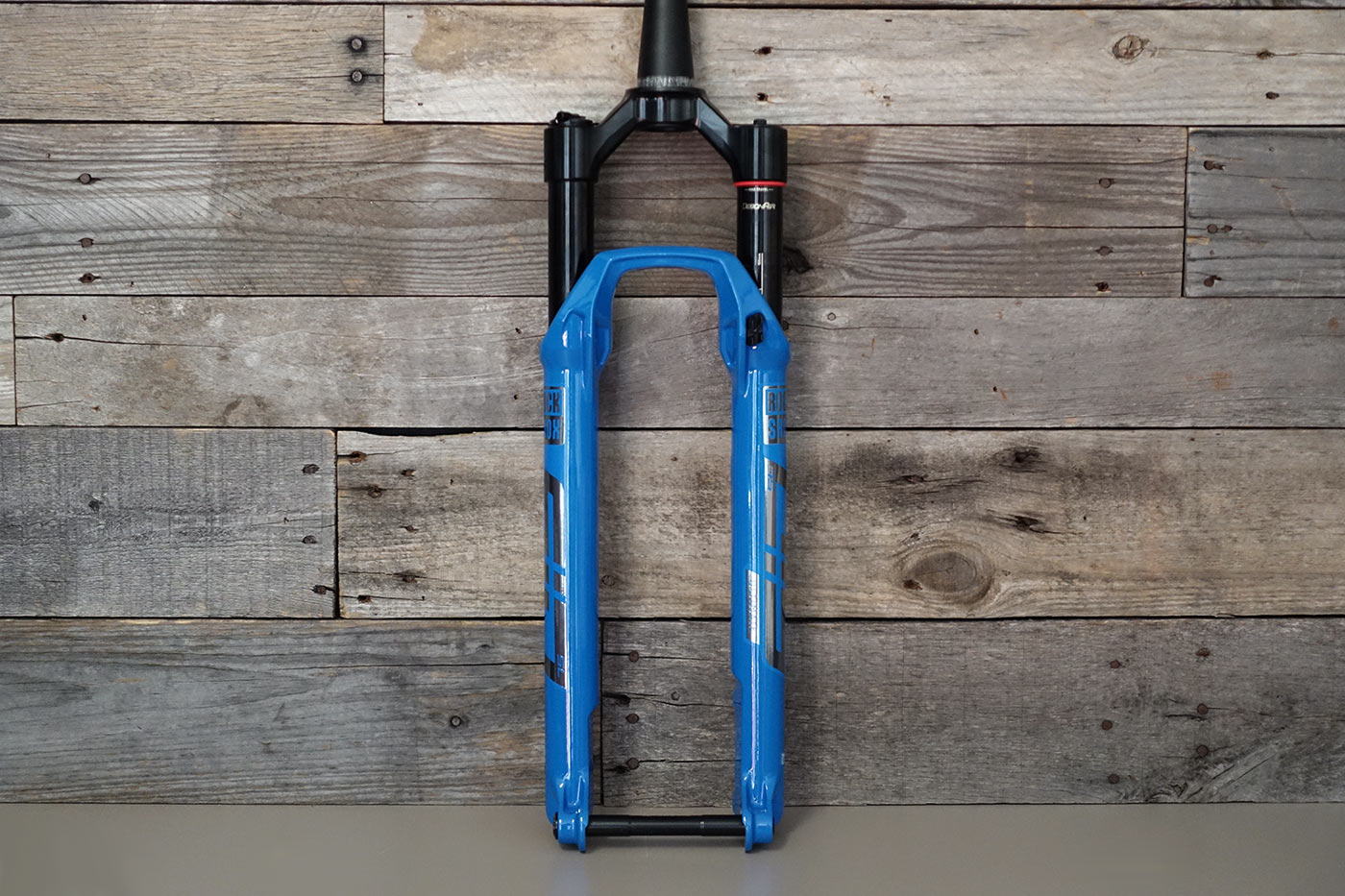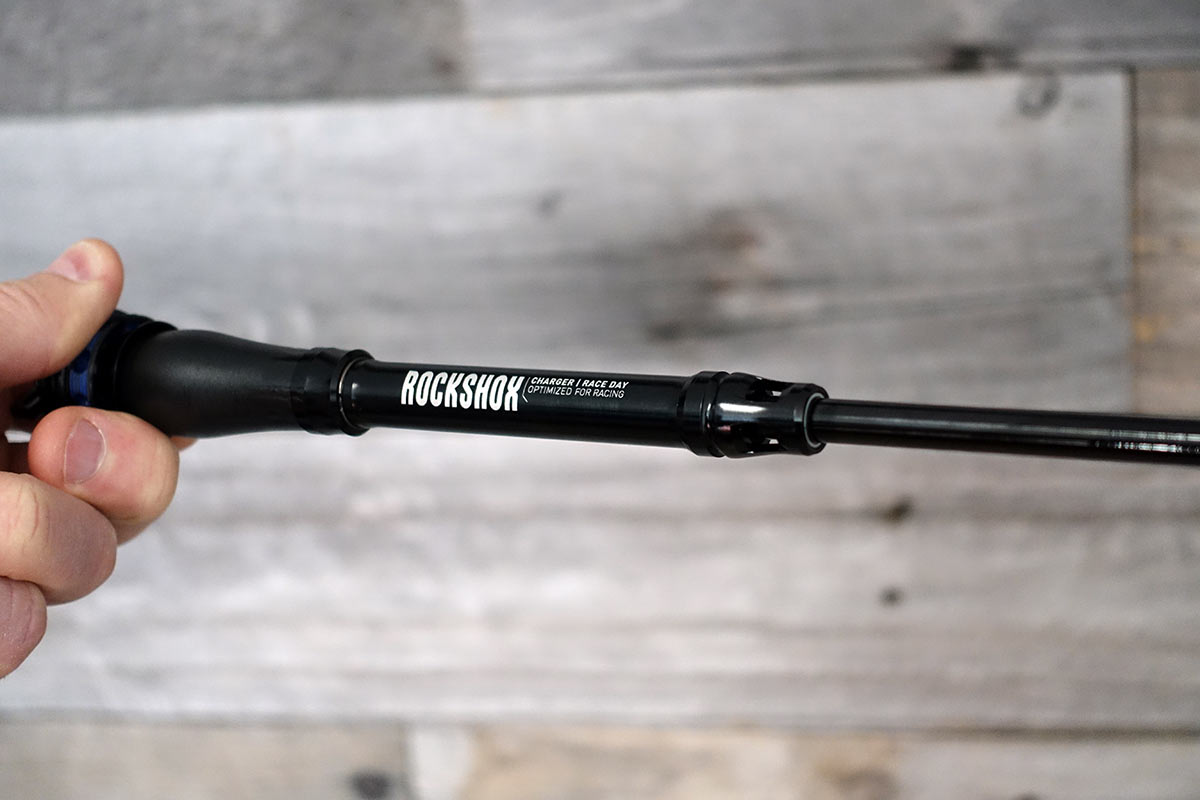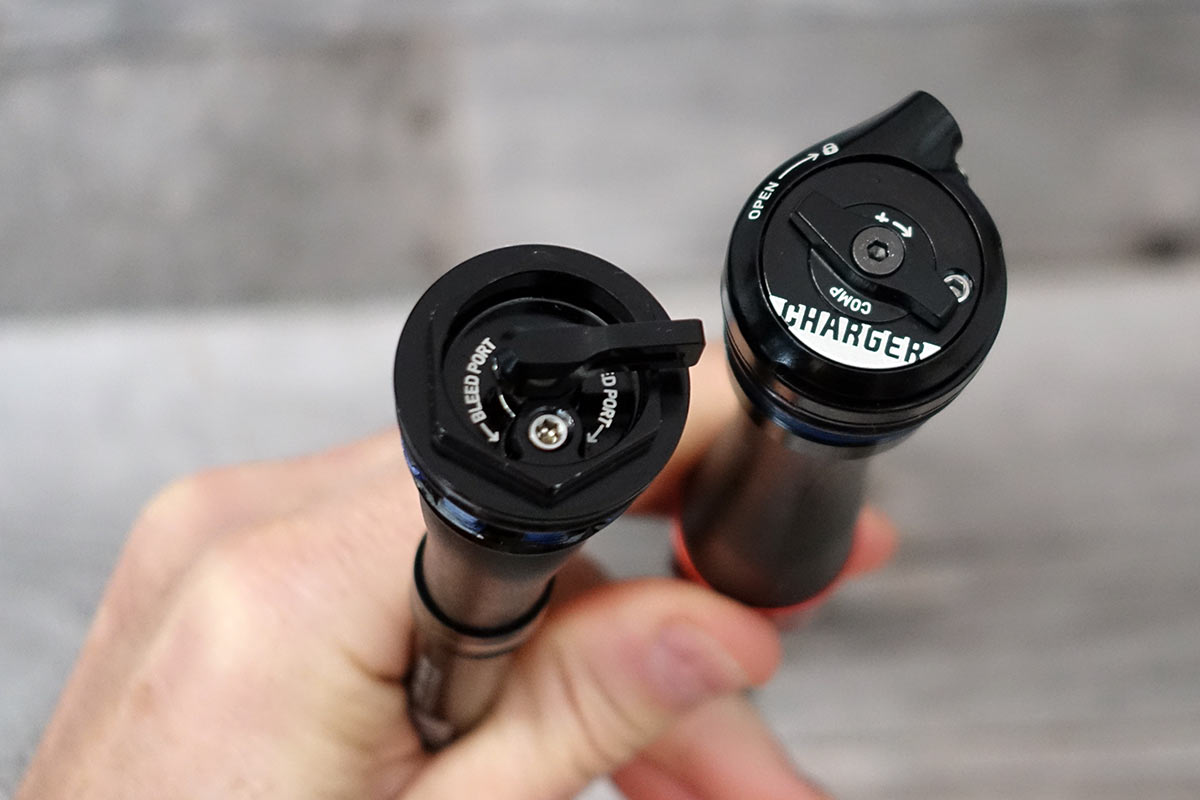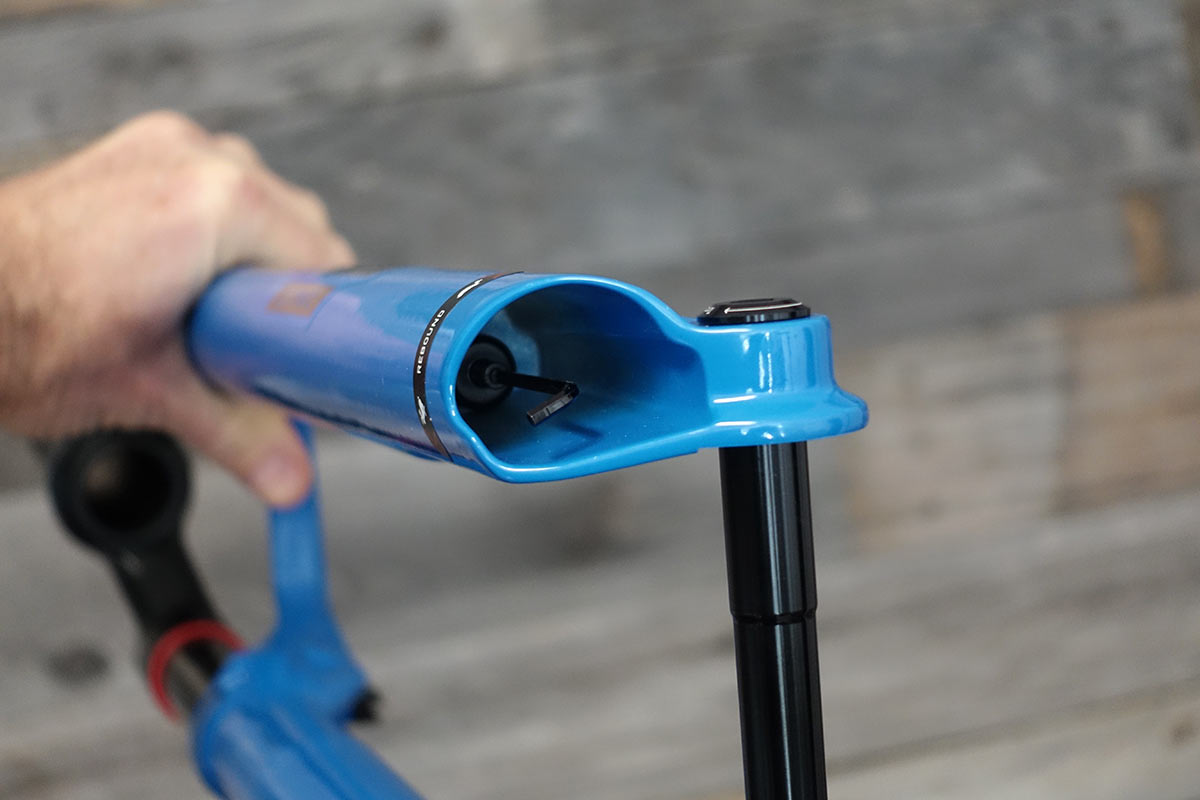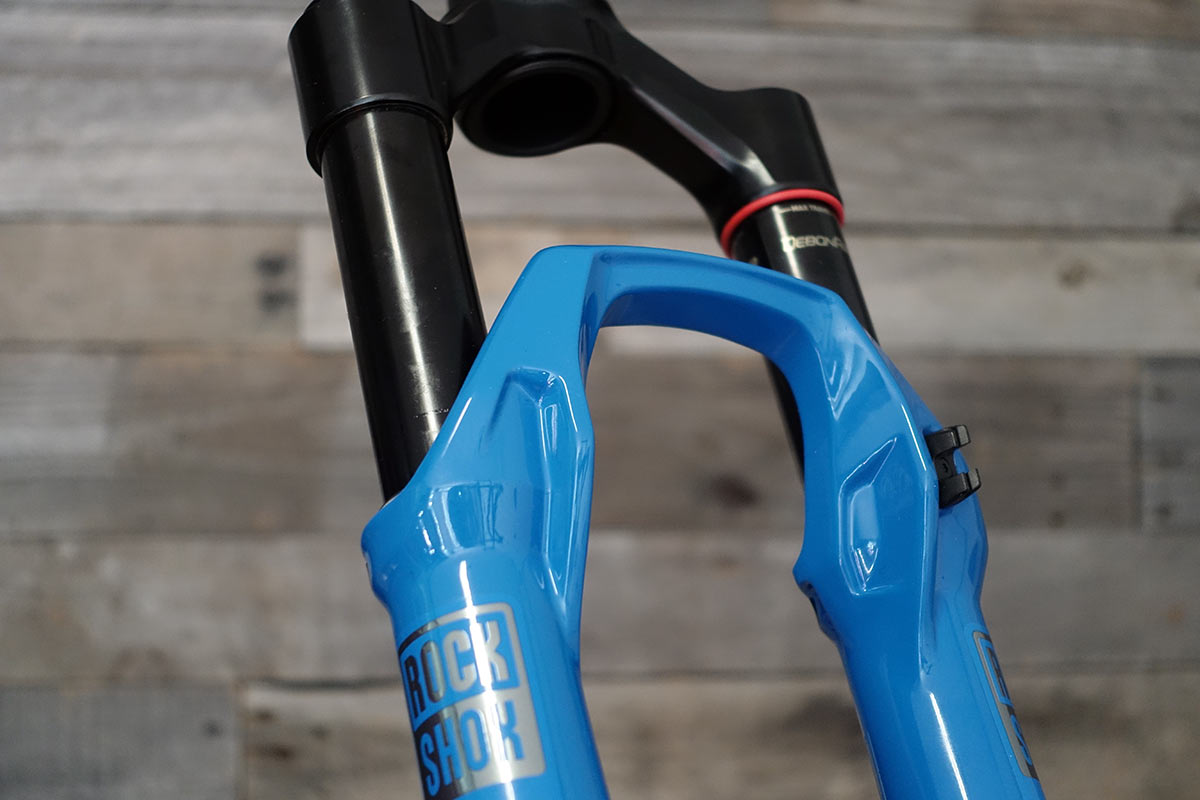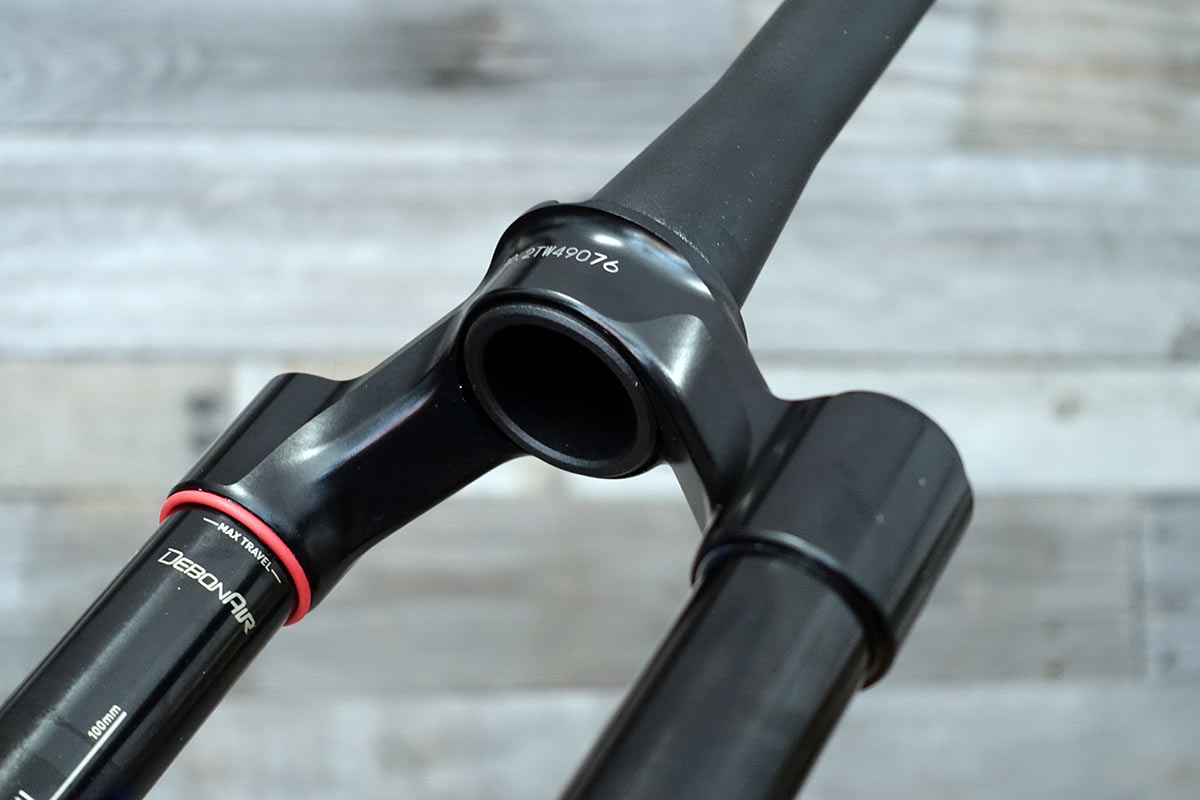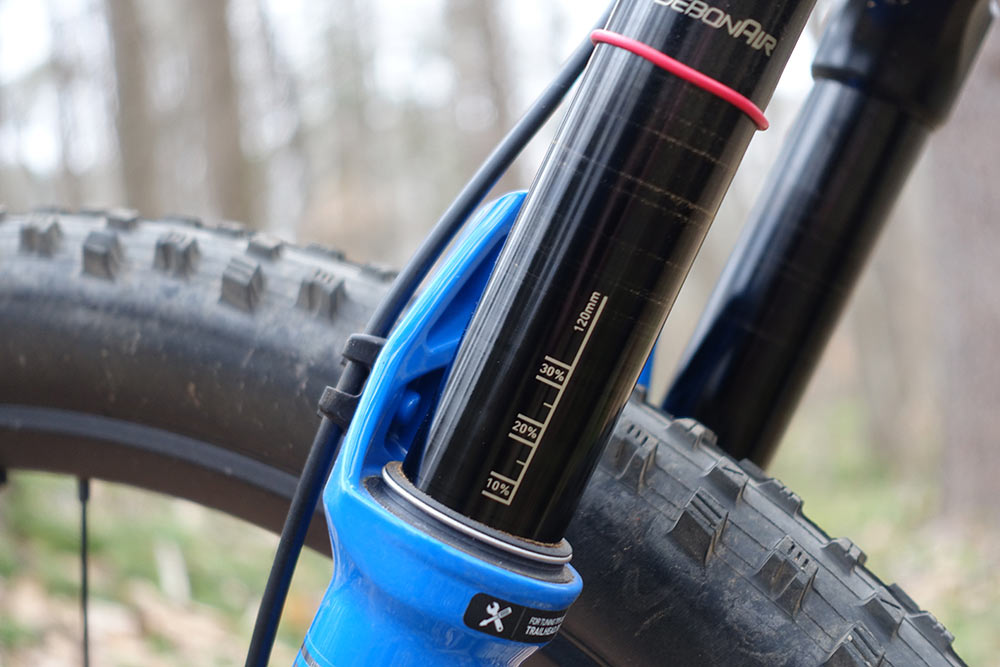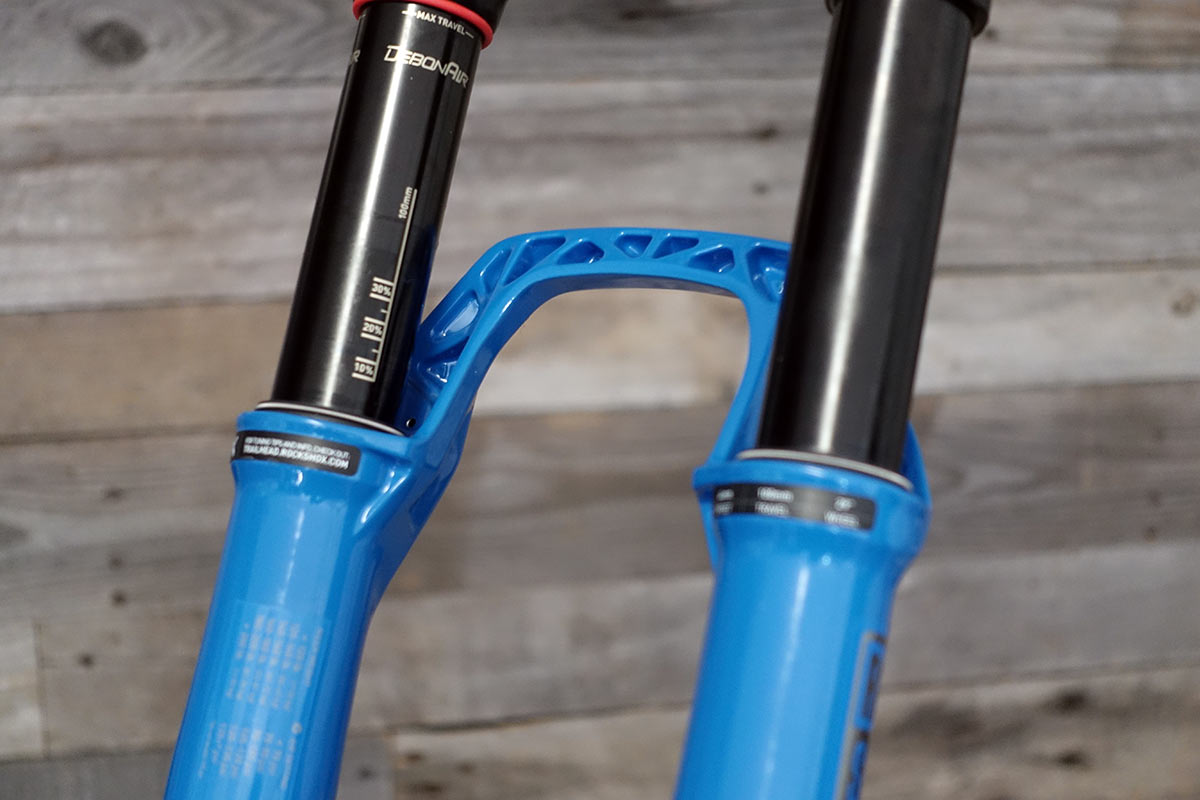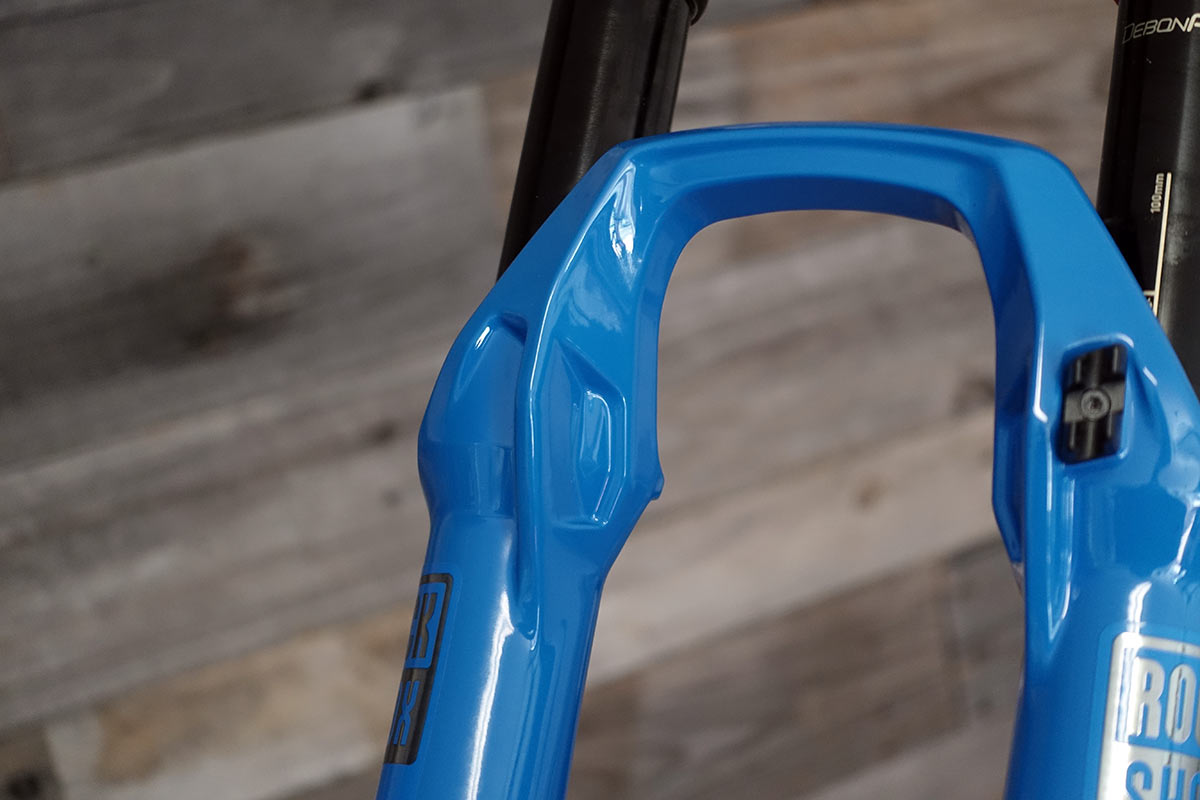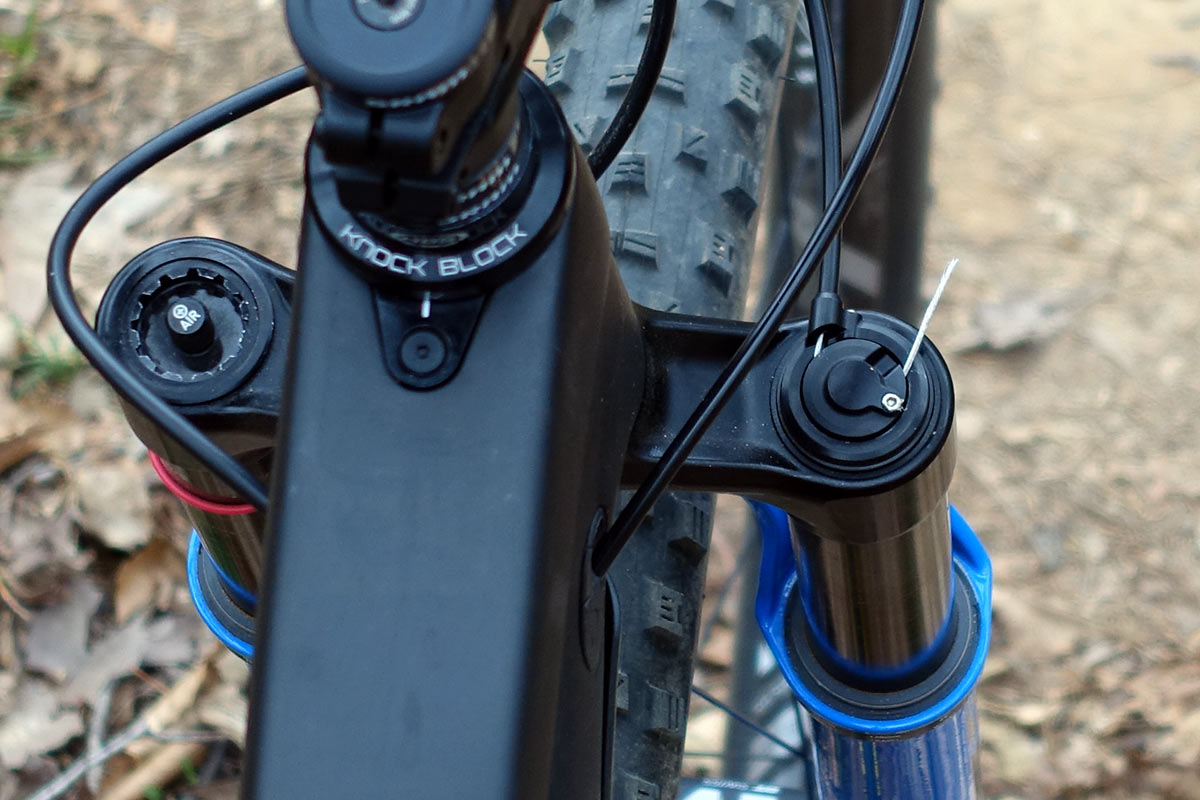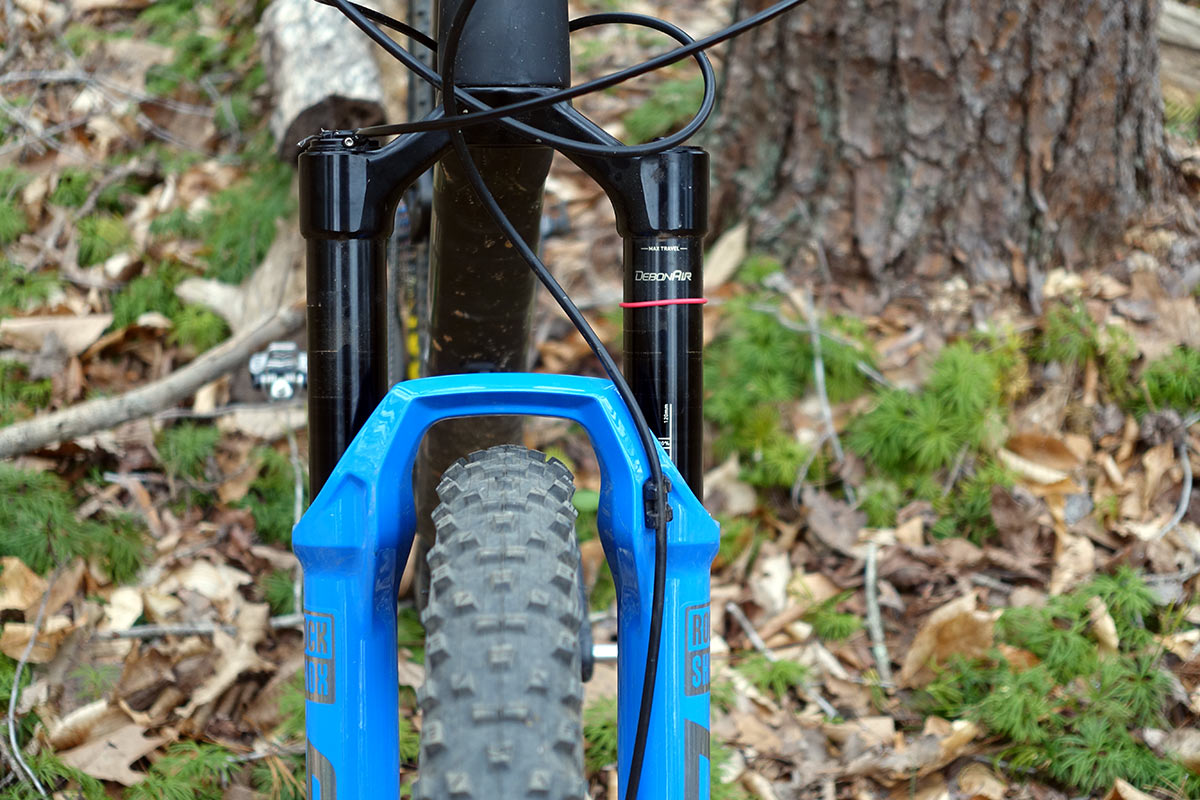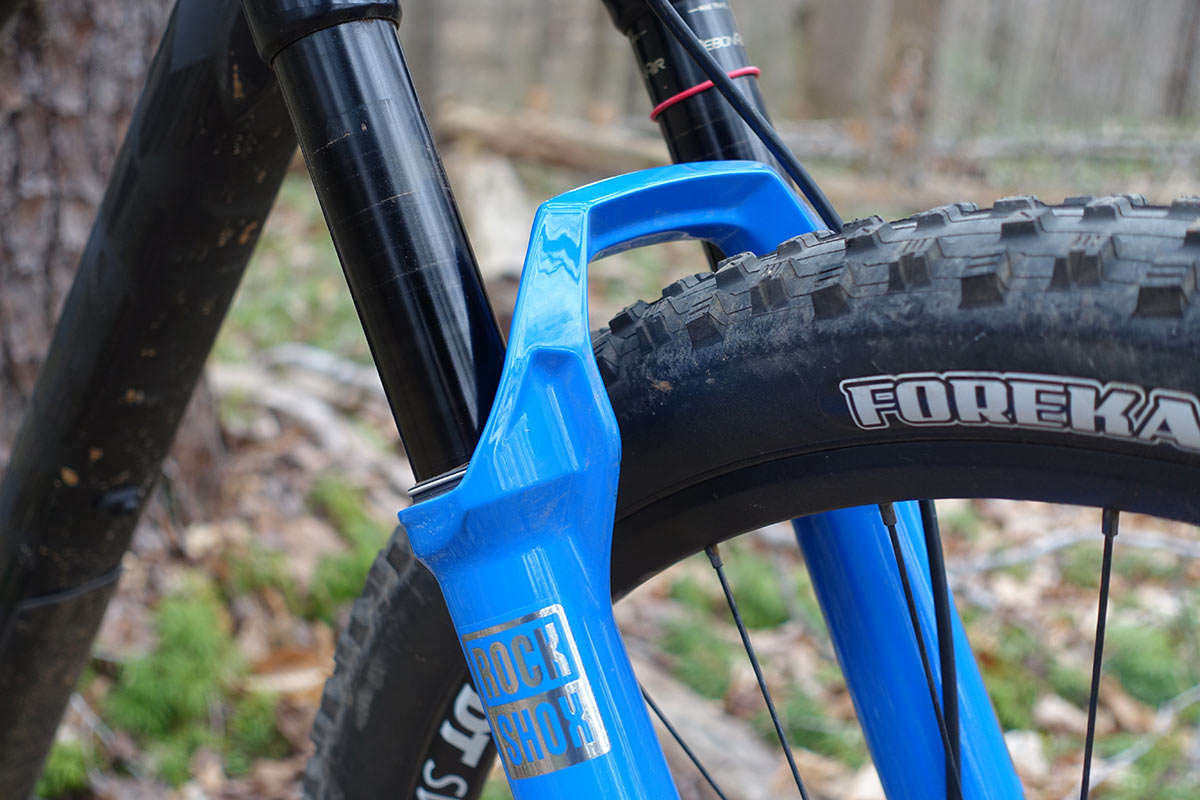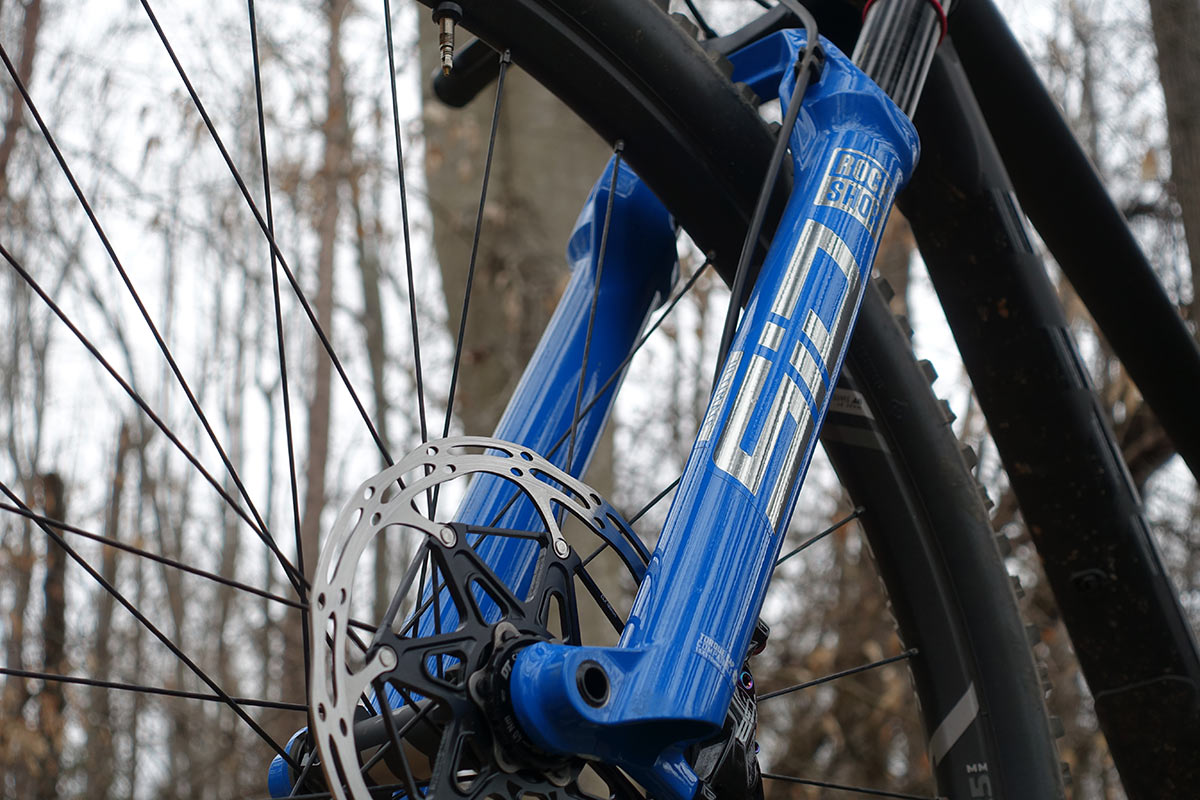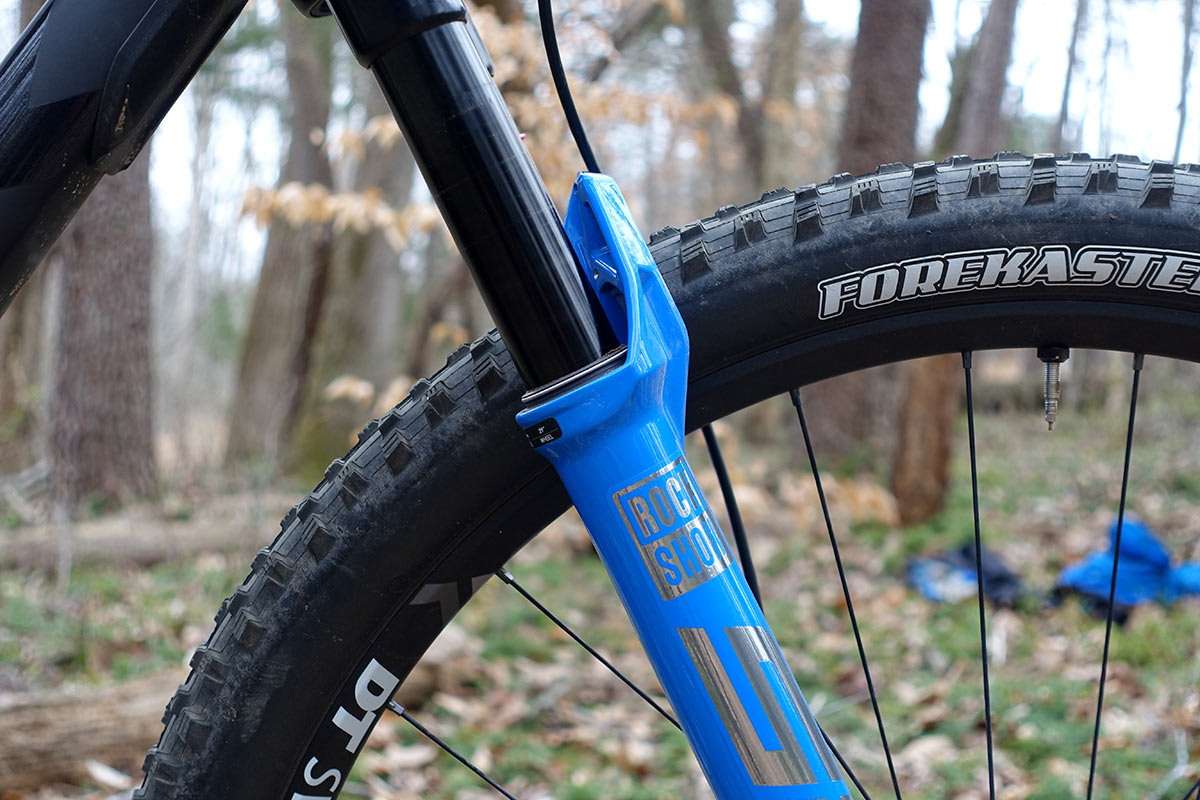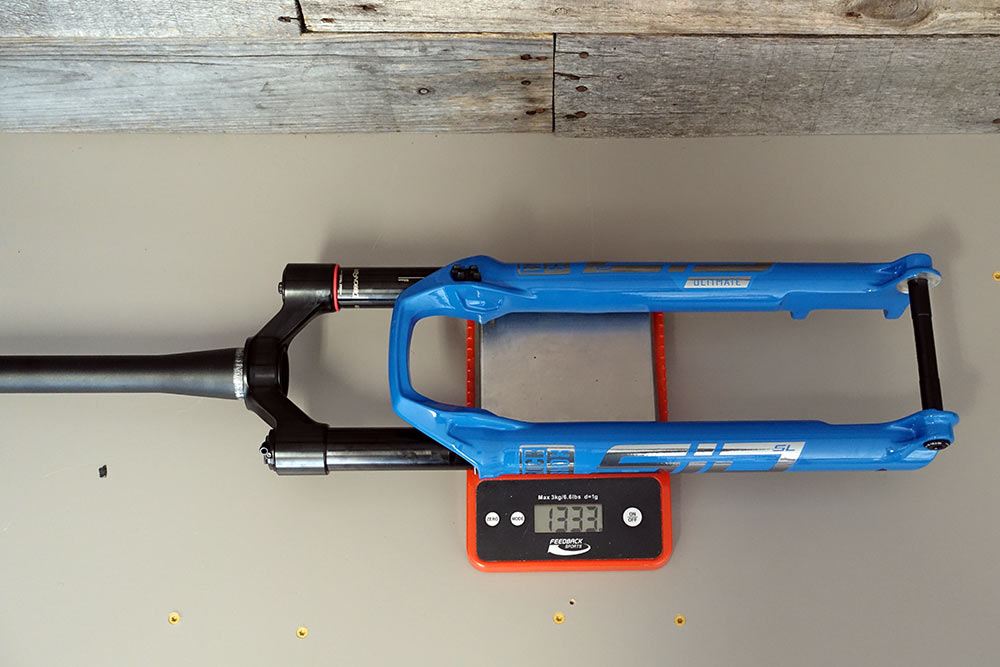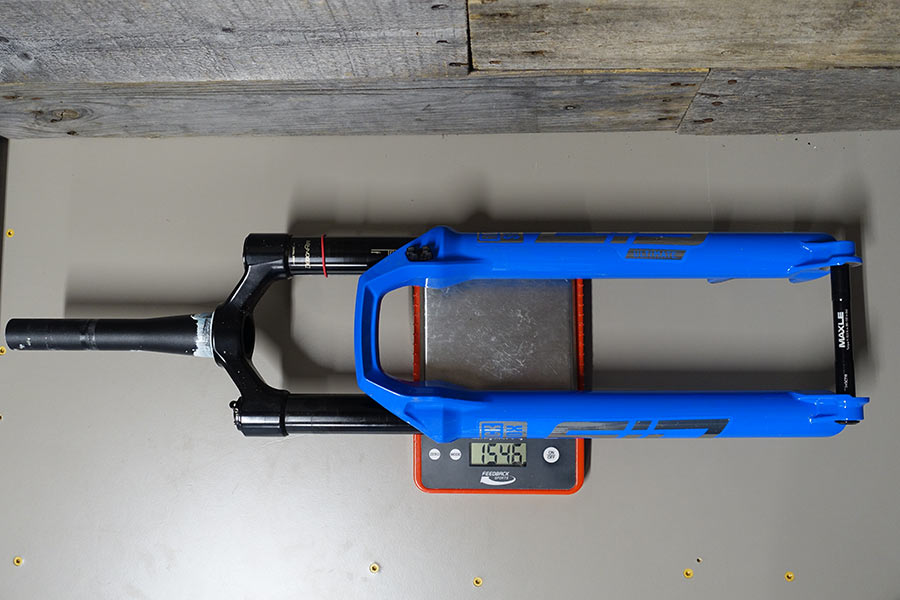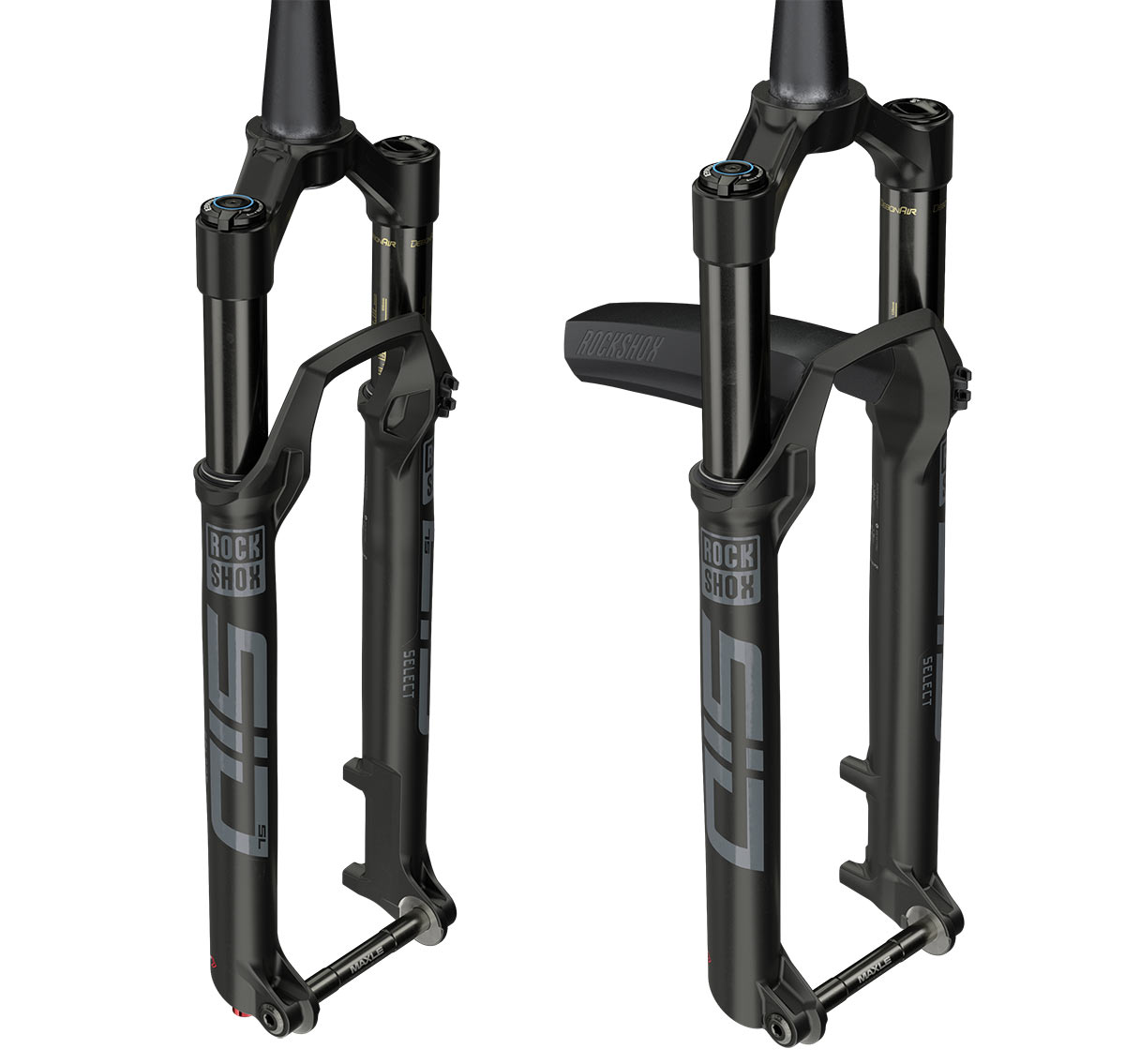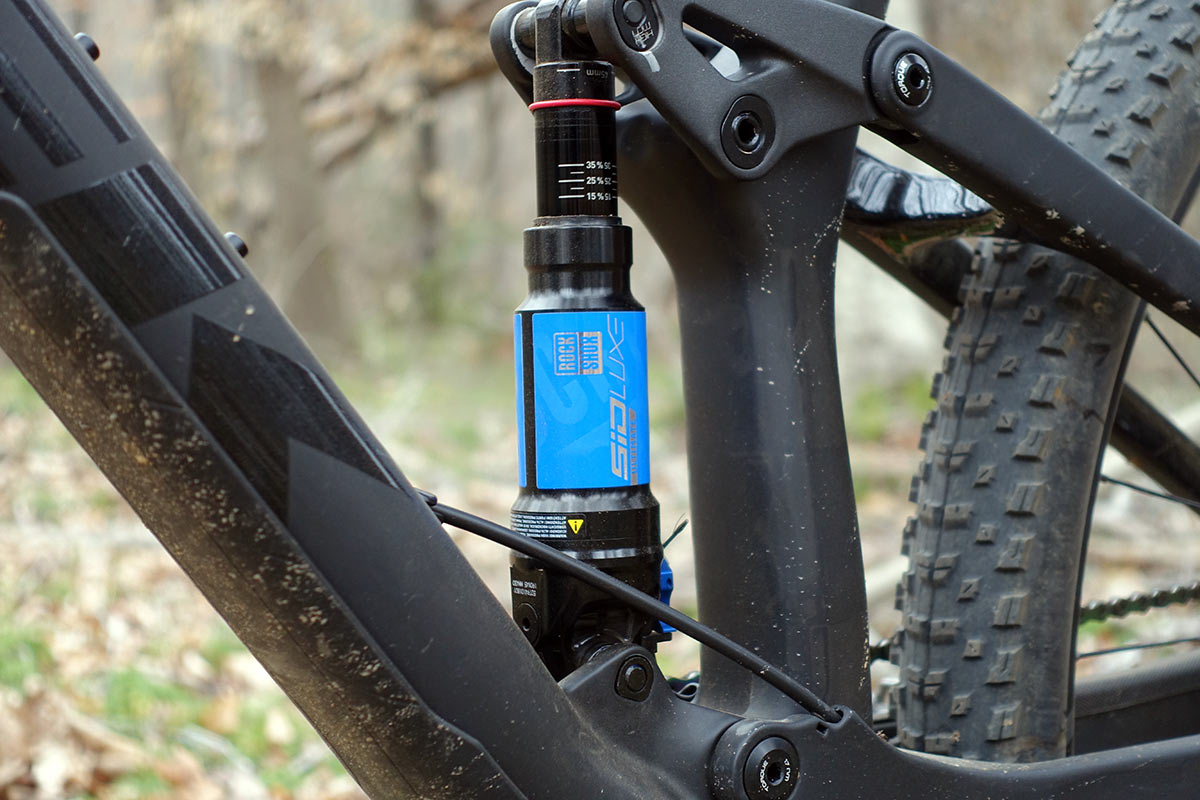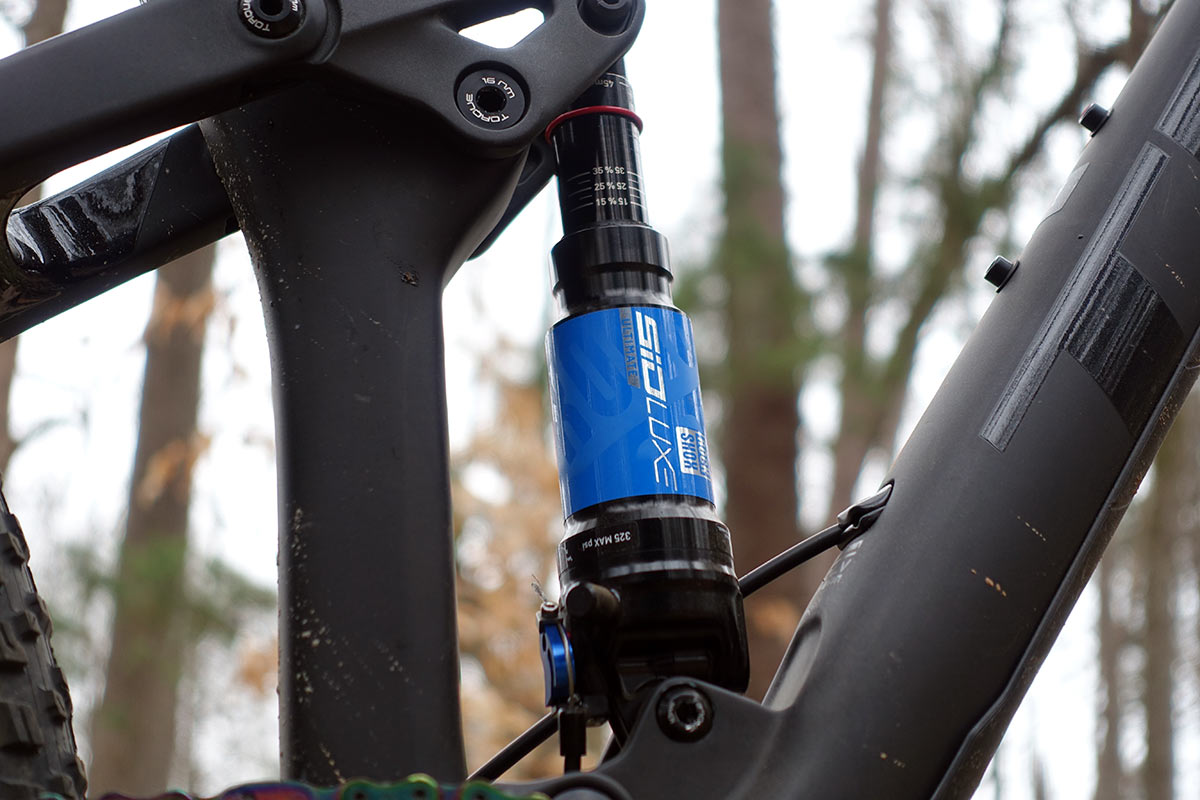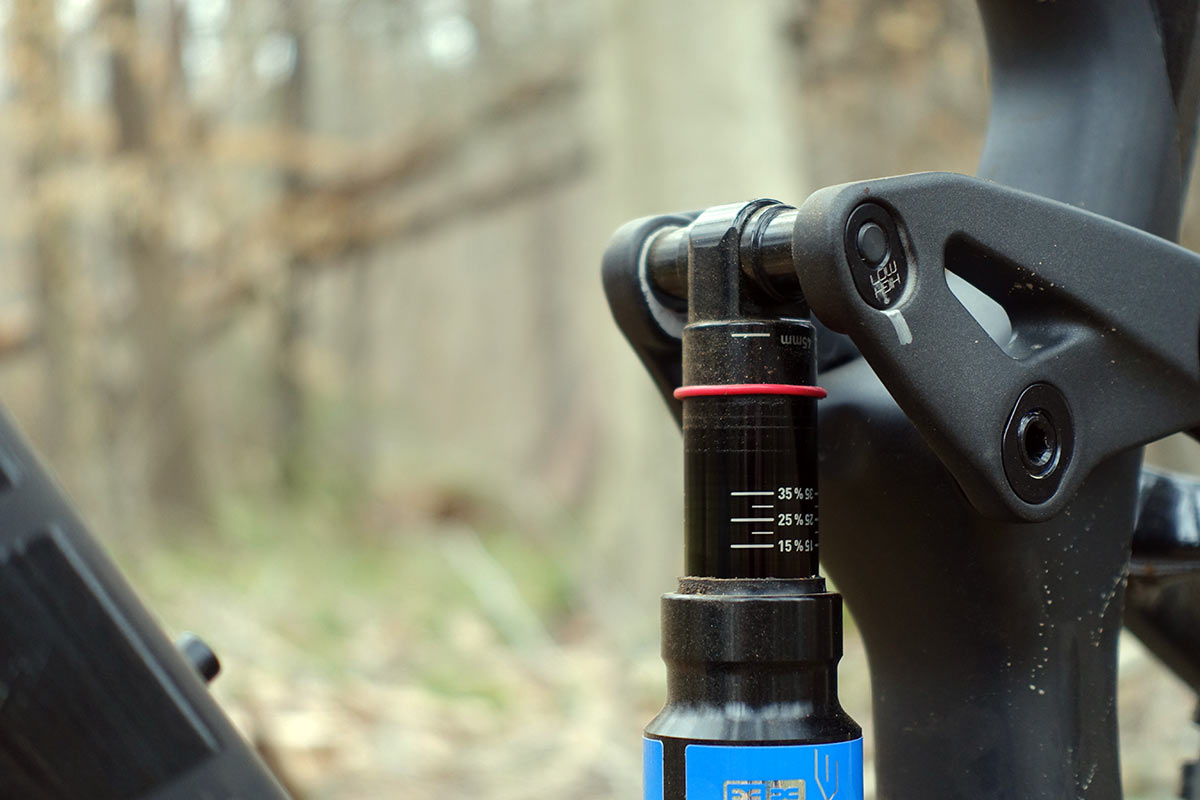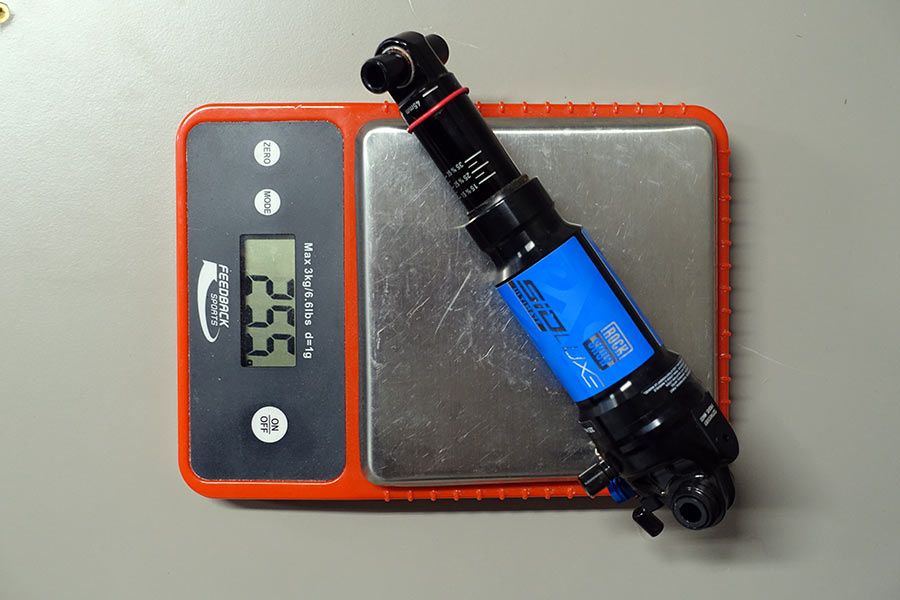The all-new MY2021 Rockshox SID SL reclaims its title as the lightest modern 29er XC suspension fork on the market. And it does that without compromising stiffness or giving up features. Oh, and there’s (finally) a new 120mm SID Ultimate that can hold its own on modern lightweight trail bikes, plus a new SID Luxe rear shock that’ll work for either setup.
We’ve been riding the new 120mm SID and SID Luxe, and got some hands-on time with the SL and it’s all-new internals and chassis. Here’s how they made it the lightest fork ever…
2021 Rockshox SID SL details
The new SID SL is their 100mm fork that’s optimized specifically for racing and “focused on the right adjustments” rather than cramming all the features on there.
As Rockshox tends to do, when it’s time to beat everyone else, they retreated to the lab and dissected every part of the fork. The new SID SL uses almost nothing from the prior model. The crown and steerer are new, along with the stanchions. The lower chassis is all new. Even the damper is new, which is where most of the weight savings came from, so let’s start there.
Charger Race Day Damper explained
The all-new Charger Race Day Damper is a whopping 100g (claimed; actual weights shown below) lighter than the comparable Charger 2.1. It’s massively slimmer, with a smaller oil volume and bladder, thinner tubes, and an extremely sleek rebound adjustment.
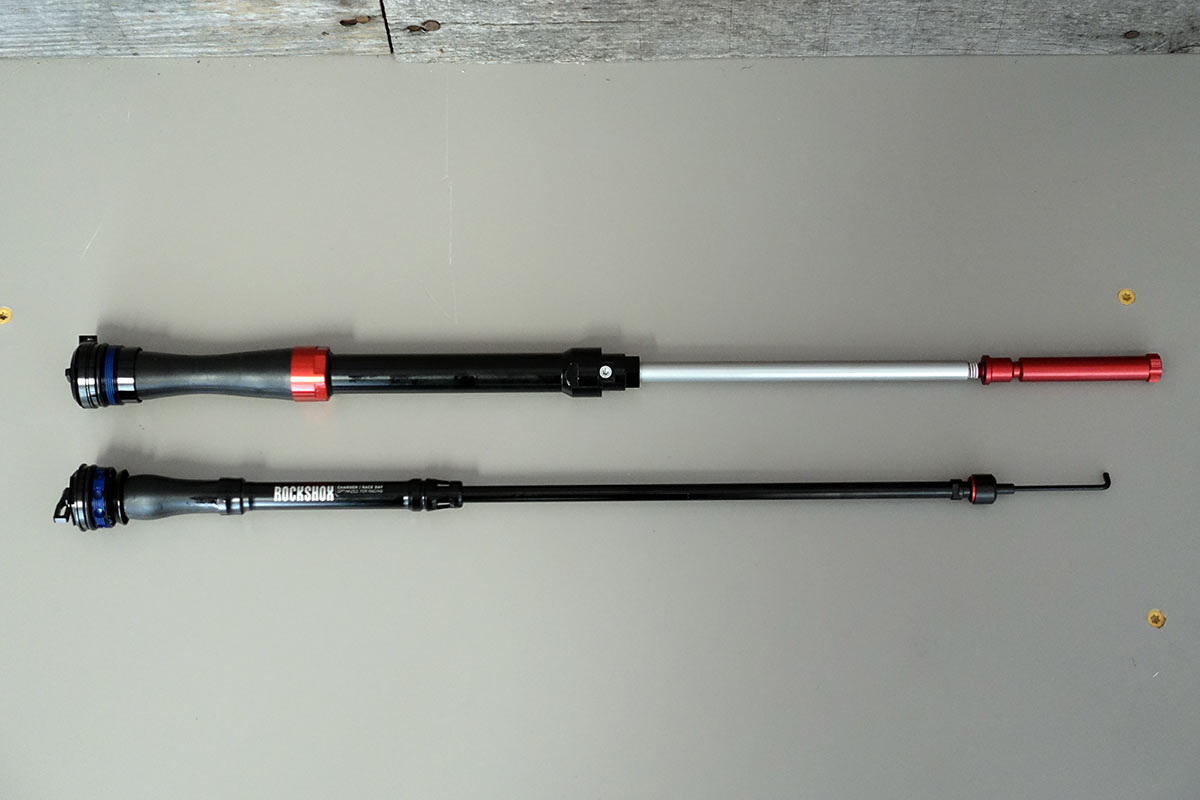
The damper’s tolerances were made ultra tight, with ports and flow paths as small as they could possibly make them without diminishing performance. The low speed compression circuit moved to the bottom, near the rebound circuit, and a non-adjustable high-speed compression circuit sits higher up.
The Charger Race Day is only a two-way damper -open or closed- there’s no middle “trail” setting. It’s the same for the lever and remote versions, and they say it has the stiffest lockout to date. Why limit the user controls? They say XC riding typically doesn’t need as much fine tuning options, so they optimized the damping tune for the discipline and shed the extraneous options in favor of reduced weight.
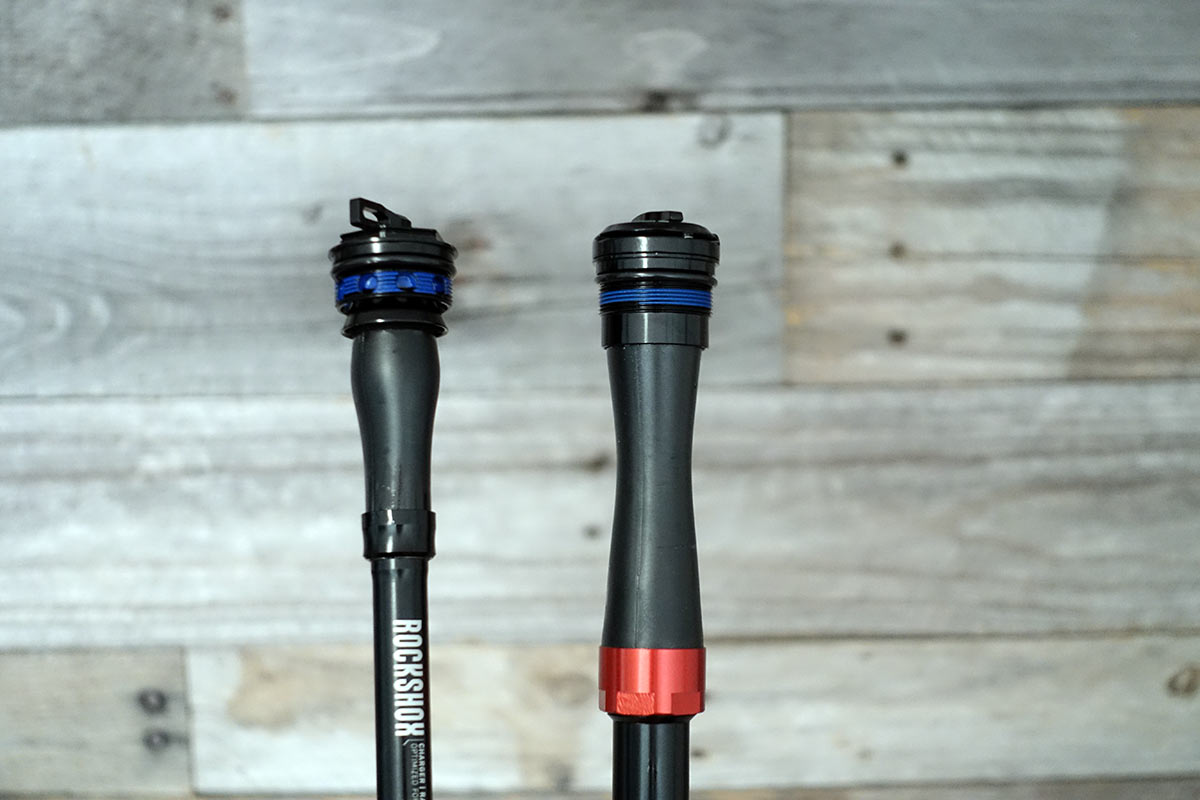
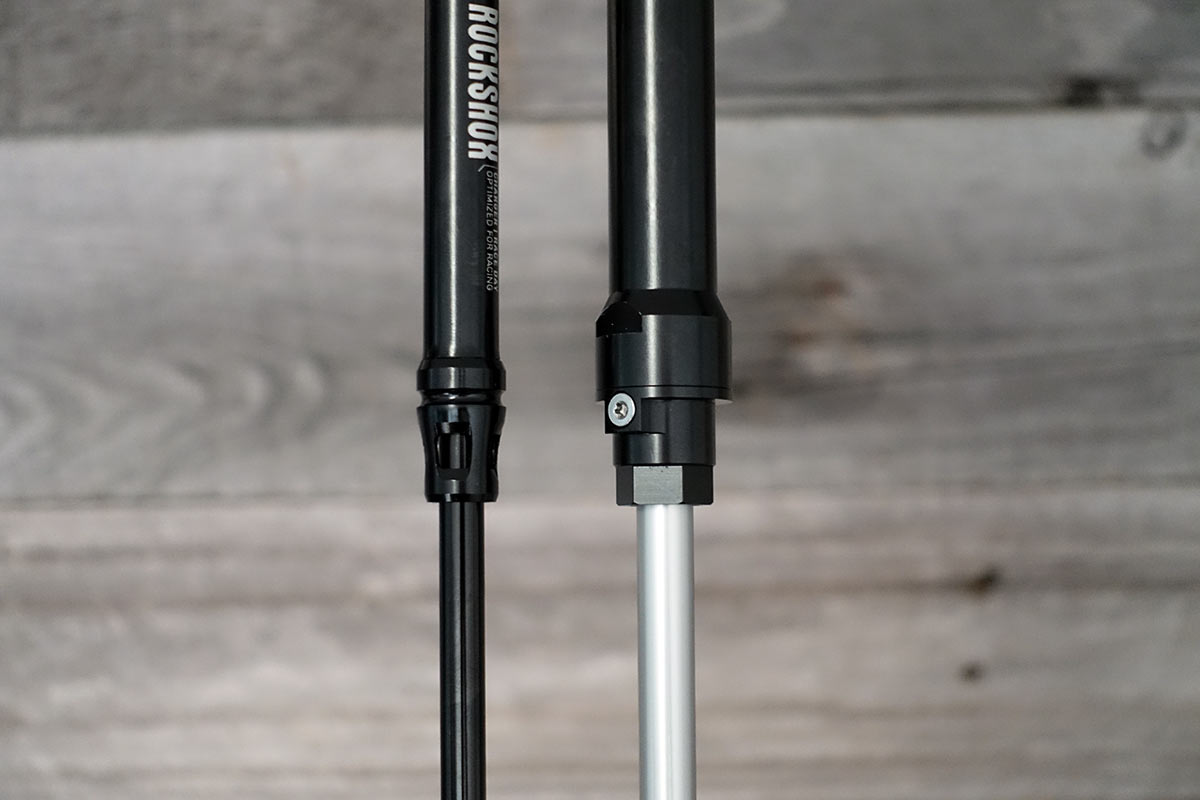
The Race Day Damper is more sensitive, designed specifically around shorter travel bikes, but with a very firm lockout. Because there’s no middle setting, they could focus all of the tuning on a single open mode, letting them give it a softer, lighter tune that’s more reliant on the spring rate than on physical damping. The smaller circumference of the thinner piston tubes mean less friction, too.
The rebound adjustment uses an included hex tool that snaps firmly into place. Leave it on, or remove it to save a few more grams.
They’ll offer two distinct Race Day cartridges – one with a lockout lever, and one for their TwistLoc remote. The cartridges’ damping, valving and performance are functionally the same, but they are made differently. So, if you wanted to switch, you’d have to replace the entire cartridge.
What else is new?
The new chassis is chiseled to create boxy sections for stiffness, and it’s narrower than before. Hard, angular creases at the crown combat torsional flex to keep everything sliding straight up and down and the steering on point.
The legs sit closer in than before to save weight and increase stiffness. To accomplish that, they notched the lower legs to fit around the brake caliper and give the hub and spokes a little breathing room.
The crown and steerer are machined alloy, no more carbon steerer tube option. Rockshox says they were able to get to the weight and stiffness they wanted without carbon. Which means an easier-to-manufacture part that’s also less expensive. The Ultimate models, shown here, get additional machining to shave more grams, then are anodized to a polished black finish.
It gets a new DebonAir air spring that takes all of the friction-reducing upgrades (SKF wiper seals, Maxima Plush fluid) used in the air chambers of the 2020 Ultimate forks, but with one small tweak: The check valve dimple inside sits lower.
In fact, it sits level with the piston seal when the fork is static. So, when you inflate the positive chamber, air is bypassing the seal and simultaneously filling the negative chamber, too. As soon as you put weight on the fork and get into your sagged position, the chambers are closed off from each other.
They say this helps the fork sit higher in the travel, and it’s designed to run just 15-25% sag (compared to the recommended 25-35% sag of their longer travel forks). The goal? To make full use of the shorter travel by not wasting so much in sag.
They also changed the shape of the air chamber and top out bumper to be more like the Pike and Lyrik (both of which also use 35mm stanchions), but with a smaller, lighter seal head.
It’s backwards compatible… mostly.
One of the great things about all of the upgrades made to their MY2020 forks is that you could update prior model year forks with the slicker air spring internals, new dampers and more. Same here, mostly.
The 32mm-stanchion SID SL Charger Race Day Damper will drop directly into 100-120mm travel SID and REBA forks going back to MY2014. That means you can easily shed 100g from those forks. Aftermarket price for the damper is TBA.
Buuuuuut, the new 35mm SID Race Day dampers will NOT retrofit into their other 35mm forks (like a Pike or Revelation). Don’t feel bad. The Pike and Revelation are designed for longer travel and much more aggressive riding…you wouldn’t want the Race Day damper in them anyway.
SID Ultimate is now the lightest trail bike fork
The new SID 120mm fork is their answer to the Fox 34 Step Cast , which has all but owned OEM spec for lightweight trail and aggressive XC bikes for the past three years. We predicted Rockshox would have to answer, and they have. In a big way.
Real quick on that naming scheme: The SID “SL” is the dedicated XC race 100mm travel-only model with 32mm stanchions. Drop the “SL” moniker and you gain bigger 35mm stanchions and more travel…
…if you want it. The SID comes in 100 and 120mm versions. So, if you’re a bigger rider but only need/want 100mm travel, get the “regular” SID because the 35mm stanchions will offer more stiffness and strength. Or if you’re building up a lightweight trail bike or like to get rowdy on your XC rig, get the 120mm version.
Word is you can change the 120mm down to 100mm, but not the other way around. Let’s be real though, once you start riding 120mm, you’re probably not going back to 100mm of travel on that bike.
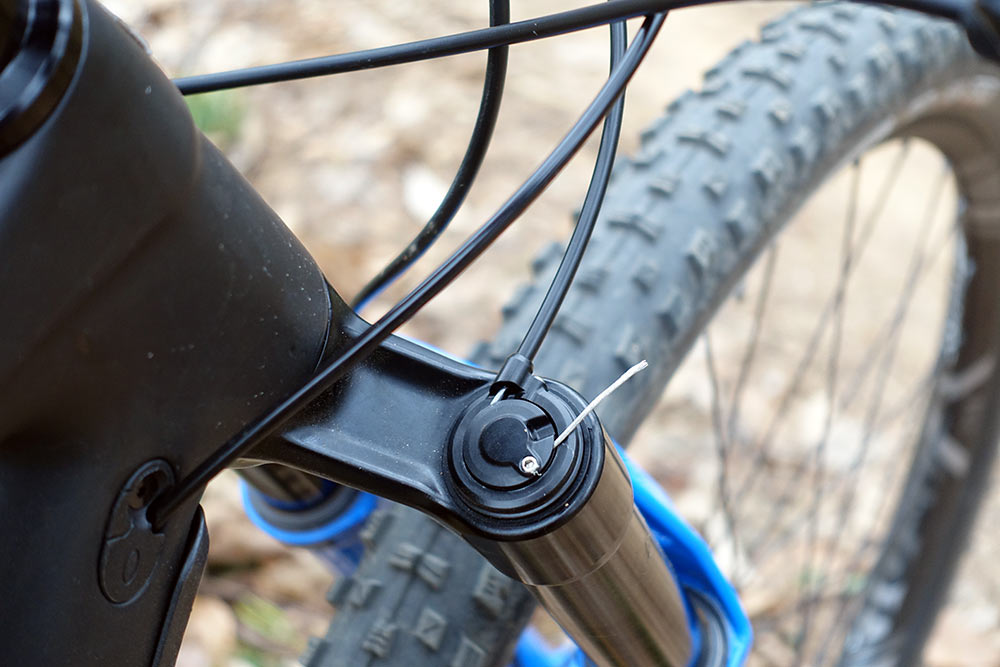
The Race Day Damper in this fork shares the same tune, controls and lockout options as the SL model. The forks also share the same design philosophy, with similarly machined alloy crowns and chiseled lowers, just a bit bigger and burlier.
Both models are TorqueCap compatible, and both use a tooled thru axle. They’re designed around 160mm (SID SL) and 180mm (SID) minimum front brake rotor sizes.
2021 SID SL & SID Ultimate actual weights
OK, burning questions: How light is the new SID? How does the new SID SL compare to the Fox 32 Step Cast fork?
With an uncut steerer, the SID SL weighs 1,333g on our scale. The original MY2017 Fox 32 SC fork came in at 1,379g, and the stiffer followup from 2019 came in around 1,409g. That puts the new SID SL about 76g (0.17lb) lighter than the Fox 32 SC. And that’s about 130-150g lighter than the 2020 SID Ultimate Carbon, yet this one costs hundreds less.
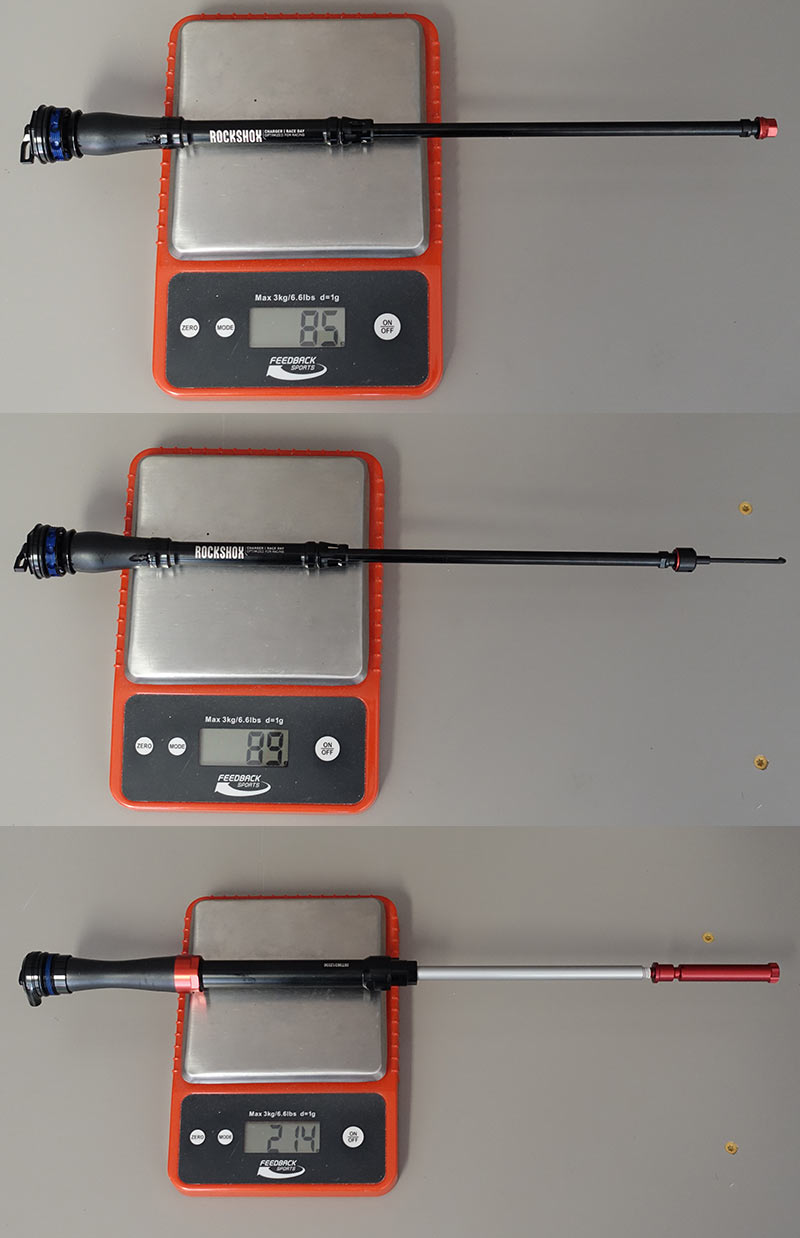
While the new chassis and crown help, the majority of the new SIDs’ weight savings comes from the Charger Race Day Damper. Compared to the Charger 2.1, the Race Day version drops a massive 129 grams!
Claimed weights for the dampers are 88g (32mm SID SL), 96g (35mm SID), and 186g (MY20 Charger 2.1 RLC).
The 120mm SID comes in at an impressively light 1,546g.
By comparison, our Fox 34 SC weighed in at 1,698g with an uncut steerer (and virtually identically at 1,699g with cut steerer, crown race and star nut installed, which is exactly how we weighed the SID shown in this post). So, apples to apples, that’s more than 150g (0.33lb) lighter!
SID Select models, specs & other things you should know
So far, we’ve covered the top-level Ultimate models, but there’s a Select edition for both the SID and SID SL, too. The key differences are that they use the standard Charger 2.1 RL. They share the same alloy crown-and-steerer unit, too, but it doesn’t get the additional machining and shiny black ano. Here’s the complete lineup’s claimed weights and pricing:
- SID SL Ultimate – 1,326g – $799-869 / €869-949 / £779-849
- SID SL Select – 1,468g – $599-669 / €649-729 / £579-649
- SID Ultimate -1,537g – $899-969 / €979-1,059 /| £869-949
- SID Select – 1,671g – $699-769 / €759-839 / £679-749
All prices for all models listed in this article include VAT. Other key specs and details:
- Max tire sizes are 29×2.4 (SID SL) and 29×2.5 (SID) for most brands.
- They use the same 32mm / 35mm Bottomless Tokens as their other forks.
- All forks include new Rockshox short fenders
- 29er only, no 27.5″ options
- 44mm Offset only
SIDLuxe lightweight rear shock
SID Luxe Ultimate is a race-optimized rear air shock made specifically for race bikes, for bikes with up to 120mm of rear travel. It has a simple two-circuit adjustment – open or locked out.
Like the forks, it gets a very firm lockout. So, the open mode uses a lighter tune to keep it supple off the top. The Luxe relies on the smaller air volume’s inherent ramp to prevent harsh bottom out. Want to tune it? Up to two Bottomless Token rings let you adjust the air volume.

Rebound adjust is tooled here, too, using the same 2.5mm allen wrench as on the fork. The adjustment is hidden behind the compression adjustment lever (there’s a non-remote version that uses a standard lever) or accessed via a port in the remote’s rocker.
They’ll offer it with up to 50mm stroke in a variety of sizes (full list TBA) in both Trunnion and Standard mount. You’ll be able to get it with this blue decal, or Gloss Black. Like the new forks, the Ultimate model uses Maxima Plush damping fluid and SKF seals. There will be a Select+ model coming in the near future, but no info is available for that yet.
Claimed weight is as low as 227g. We pulled ours off the Trek Top Fuel test bike and it weighed in at 255g for the remote lockout version.
Stay tuned for our first ride impressions and video!
